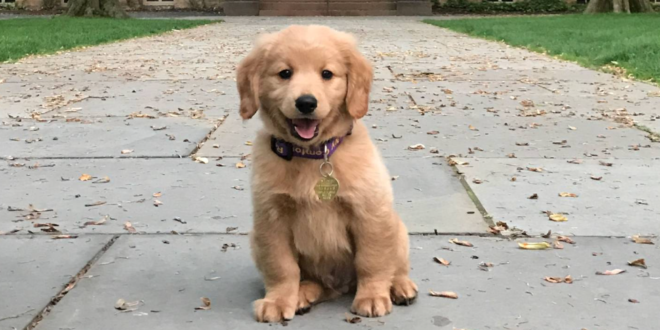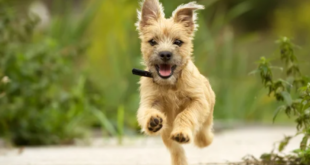How To Train A Dog To Walk – Taking your furry friend for a walk can be a wonderful bonding experience, but it’s not always easy. The excitement of exploring new sights and smells can make even the most well-behaved dog pull on their leash, making the whole experience frustrating and exhausting. However, with a few easy training techniques, you can teach your dog to walk calmly by your side and turn those walks into a relaxing and enjoyable activity for both of you. In this article, we’ll guide you through the steps to train your dog to walk politely on a leash, ensuring that each walk is a pleasant experience for you and your furry companion.
Table of Contents
1. Paws to Pavement: A Step-by-Step Guide on How to Train your Dog to Walk
Having a dog who walks calmly on a leash can make a big difference in your daily life. However, achieving that can be challenging, especially if you have a young or hyperactive dog. Fortunately, training your canine companion to walk on a leash is not that difficult. Here are some steps that you can follow to make your wish of having a calm and controlled walk with your dog come true.
Start with the basics – Before you can go out on a walk, you need to get your dog used to wearing a collar and a leash. Attach a leash to your dog’s collar and allow them to get familiar with it by letting them wander around the house. Reward them with treats and praise for wearing the leash and allow them to walk around to explore their surroundings with the leash on. Once your dog is comfortable with the leash, you can move on to actually walking with them.
Provide direction – As you begin walking, give clear directions to your dog and be sure to use positive reinforcement when they get it right. Rather than pulling the leash, encourage them to move with treats, toys or praise. Use verbal cues like “heel” or “let’s go” to indicate your intentions. This process requires patience and perseverance, so remember to take it slow and focus on positive rewards.
Be prepared for distractions- Even with the most well-behaved dog, it’s natural for them to get distracted or excitable. When this happens, be patient with your dog and avoid punishing them. Instead, stop and redirect their attention with treats and positivity. With practice and consistency, your dog will learn to walk calmly as they get more comfortable with walking on a leash.
2. Mastering the Leash: Tips and Tricks for Dog Walking Success
One of the most important skills for dog owners is mastering the leash. Whether you’re taking your dog out for a leisurely stroll or training for more advanced activities like agility or obedience, having a well-controlled leash can make all the difference. Here are some tips and tricks to help you become a pro at dog walking:
– Start with the right equipment: Make sure you have a sturdy leash that is appropriate for your dog’s size and strength. You may also want to consider a harness that distributes pressure more evenly across your dog’s body than a collar.
– Use the proper grip: Hold the leash firmly but not too tightly, with your hand at waist level. Avoid wrapping the leash around your hand or wrist, as this can cause injury if your dog suddenly pulls or bolts.
– Practice good communication: Use verbal cues like “heel” or “stay” to indicate to your dog what you want them to do. Reinforce your commands with gentle tugs on the leash, but don’t yank or pull excessively.
– Be aware of your surroundings: Keep an eye out for potential hazards like other dogs, pedestrians, or cars. If you see something that might trigger your dog, be prepared to distract them with a treat or redirect their attention with a game or toy.
– Remember to have fun: Dog walking should be an enjoyable experience for both you and your furry friend. Take time to explore new places, enjoy the fresh air, and bond with your dog on your walks. With these tips, you’ll be well on your way to mastering the leash and having great dog walking success.
3. From Pulling to Strolling: Transforming your Dog’s Walking Behavior
Walking your dog is one of the most enjoyable moments you can share with your furry friend. Nevertheless, if your dog pulls, it can turn into a frustrating, painful experience. Learning how to transform their walking behavior from pulling to strolling will make the experience more enjoyable for both of you. Here are some steps to follow.
- Use a front-clip harness: This type of harness clips on the dog’s chest, decreasing their pulling strength while providing greater control for the owner.
- Stop movement when they pull: When your pooch pulls, stop moving until they come back to your side. When they do, reward them with a treat, and continue walking.
- Switch up the direction: If your dog just wants to pull in one direction, make it a habit to switch things up. Walk a few steps in the opposite direction and reward them for adjusting their behavior.
- Teach commands: Introducing commands such as “heel” or “slow” can help your pooch learn what you expect from them during walks.
Above all, patience and consistency are key when transforming your dog’s walking behavior. With a little perseverance, every walk will become a joyous experience for you and your furry friend.
4. Harnessing Their Energy: Techniques for Training High-Energy Dogs to Walk
One of the biggest challenges for owners of high-energy dogs is training them to walk on a leash without pulling. It can be frustrating and exhausting for both the dog and the owner, but there are techniques that can be used to make the training process more successful.
First, it’s important to understand that high-energy dogs need lots of exercise and mental stimulation. They simply have more energy to burn than other dogs, and if they don’t get enough exercise, they’ll become bored and restless. This can lead to undesirable behaviors like chewing, digging, and excessive barking. So, make sure your dog is getting enough exercise and playtime before attempting a training session.
To start leash training, begin by teaching your dog to walk nicely on a loose leash in a quiet, low-distraction environment. Use a treat or toy to encourage your dog to walk beside you, and reward them when they do so. If your dog starts to pull, stop walking and ask them to sit. Wait for a few seconds, and then start walking again. Repeat this process until your dog understands that pulling will not get them where they want to go. With patience and consistency, your high-energy dog can learn to walk on a leash without pulling and become a great companion on your walks.
5. Walking in Harmony: The Importance of Positive Reinforcement in Dog Training
Positive reinforcement is crucial in dog training, especially when it comes to leash manners and walking in harmony. Dogs are intelligent animals, and they respond well to positive reinforcement techniques that reward good behavior. When you use positive reinforcement, you are providing your dog with something they enjoy, which encourages them to continue the behavior. This creates a positive cycle of good behavior and rewards, leading to a happier, well-trained pup.
Using positive reinforcement techniques is easy. You can reward your dog with treats, toys, or praise when they behave well on a walk. Start by praising your dog when they walk next to you quietly and don’t pull on the leash. Over time, you can start to phase out treats and toys and rely more on praise and affection. By doing this, your dog will come to associate good behavior with rewards. It’s important to remember that dogs are like children and need consistent positive reinforcement to maintain good behavior.
Incorporating positive reinforcement into your dog’s training can also have several other benefits. It can help build trust between you and your dog, improve their overall behavior, and create a more harmonious relationship. With time and patience, your dog will learn to walk in harmony with you and be a joy to take on walks. By using positive reinforcement techniques, you can create a strong bond with your furry friend that will last a lifetime.
Training your dog to walk can be a rewarding experience. With lots of patience, practice and plenty of rewards, your pup will be walking with you in no time. With the right guidance, you and your furry friend can enjoy many amazing adventures outdoors. Embrace this learning process and have an amazing time bonding with your pup.
 Treat For Dog – Brain Training for Dogs, Dog Training & Obedience Discover Treat For Dog and get your pup on the path to smarter, happier, and healthier living with brain training for dogs.
Treat For Dog – Brain Training for Dogs, Dog Training & Obedience Discover Treat For Dog and get your pup on the path to smarter, happier, and healthier living with brain training for dogs.




